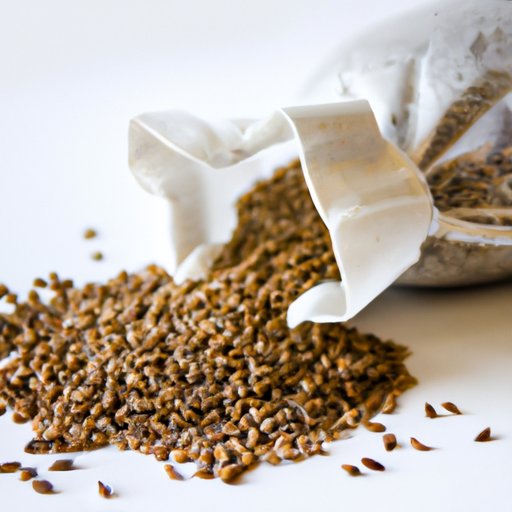Introduction
Rye has been gaining popularity in various areas due to its nutritional benefits and unique flavor profile. In this article, we’ll delve into the history, production, and uses of rye, as well as its cultural significance in different cuisines.
Rye 101: A comprehensive guide to understanding rye and its benefits
Rye is a cereal grain closely related to wheat and barley. Its scientific name is Secale cereale, and it is a member of the Poaceae family. Rye is a great source of dietary fiber, protein, and essential vitamins and minerals, making it a staple food in many parts of the world.
There are several varieties of rye, including winter rye, spring rye, and wild rye. Winter rye is the most common variety and is typically used for bread making due to its high gluten content. Spring rye, on the other hand, is typically used for animal feed and whiskey production due to its lower gluten content.
Consuming rye has numerous health benefits, including reducing the risk of heart disease, improving digestive health, and managing blood sugar levels. Rye also contains antioxidants, which help protect the body from cell damage and inflammation.
From seed to bread: The journey of rye and why it’s a staple grain
The planting and growth process of rye is relatively straightforward and requires minimal intervention. Rye is typically sown in the fall and harvested in the summer, making it an ideal crop for cold climates and areas with short growing seasons.
Once the rye plants are harvested, the grains are threshed and separated from the chaff. The grains are then cleaned and processed to remove any impurities or foreign matter.
Rye is a popular grain in bread making due to its distinct taste and nutritional benefits. Rye bread is denser and heartier than traditional wheat bread and has a unique flavor profile that pairs well with cheese, meat, and other savory toppings. Additionally, rye flour has several advantages in bread making, including improving the texture and shelf life of baked goods.
Uncovering the potential of rye flour in your baking recipes
There are several types of rye flour, including whole rye flour, light rye flour, and dark rye flour. Whole rye flour is made from the entire rye grain, whereas light rye flour is made from grain with the bran and germ removed. Dark rye flour is made by grinding the entire rye grain and is darker in color and has a stronger flavor than light rye flour.
Rye flour can be used in a variety of baking recipes, including bread, pancakes, and muffins. However, it is important to note that rye flour behaves differently than traditional wheat flour and may require additional moisture and leavening agents to prevent dense and heavy baked goods.
Consuming baked goods made with rye flour has several benefits, including improved digestive health, reduced inflammation, and improved blood sugar control.
The role of rye in whiskey production and why it’s gaining popularity
Rye has a long history in whiskey production and was one of the first grains used to make American whiskey. Rye whiskey is made by distilling a fermented mixture of rye, corn, and barley and has a distinct spicy flavor profile that pairs well with other flavors and mixers.
Rye whiskey fell out of favor after prohibition but has recently regained popularity due to its unique flavor profile and mixability. Additionally, the rise in craft distilleries and interest in traditional and unique flavors has led to a renewed interest in rye whiskey and its production.
Exploring the history and cultural significance of rye in different cuisines
Rye has been a staple grain in European cuisine for centuries, with countries like Germany and Poland using rye flour in traditional baked goods like bread and stollen. Scandinavians also use rye flour in their open-faced sandwiches and crispbreads.
Rye has also played a significant role in Jewish cuisine, particularly in the form of rye bread and rye-based dishes like cholent and kugel. Eastern European cuisine also uses rye flour in traditional dishes like pierogies and pumpernickel bread.
Conclusion
Rye is a versatile and nutritious grain that has numerous benefits and uses. Incorporating rye into your diet and lifestyle can improve your health and introduce you to a variety of new and exciting flavors. Whether you’re a baker, whiskey lover, or just curious about cultural traditions, give rye a try and see how it can enhance your life.
